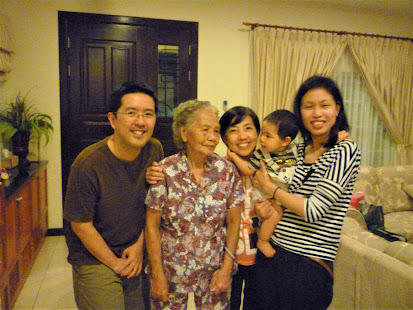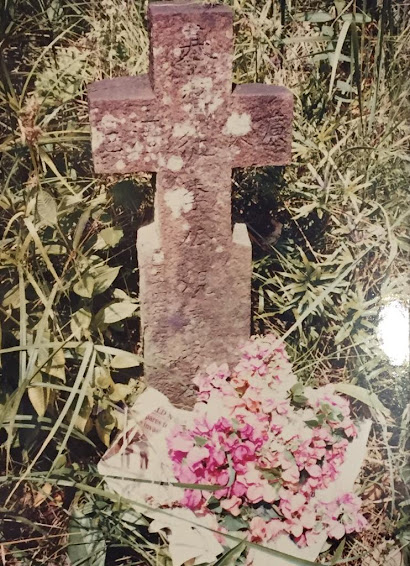On 5 April 2022, one of my brothers posted in the Family Chat: "Today is the 10th Anniversary of mom's passing". That reminder brought back memory of event in early April 2012.
We arrived Perth on 30 March 2012 and had planned to spend the next three weeks with the family of my daughter. Then on 4 April, we were informed by my siblings that mom had suffered a massive aneurism in her sleep before dawn of 4 April. She fell into instant coma and was rushed to the hospital. Brain scan showed massive hemorrhage in the brain. The doctor indicated that surgery to drain off the bleeding would unlikely save her life. Even if she made it, she might be bed-ridden and in coma for the rest of her life. Just when the siblings were in deliberation, she passed away on 5 April 2012 without ever regaining consciousness. My wife and I immediately decided to cut short our stay and flew back to KK on 8 April for the funeral.
Sudden death is often a traumatic experience for surviving family members. It is unexpected and happens without prior warning. There is no time for saying mutual good-bye. The absence of mutual awareness to separate permanently is a void that may never be filled up.
************************
My mother was born in 1928 in Pulutan, Menggatal at a turbulent time when North Borneo was occupied by the Japanese from early 1921 to mid-1945. This may have been the key factor she didn't receive a proper education. Three years after the end of the occupation, she married my father at age 20. She once told me that she in fact had gotten to know someone whom she liked. But unfortunately marrying someone of your choice was not the norm at that point of time. In the end, she married my father because of family arrangement. That of course changed the course of her life.
She worked very hard all her life, at least up to the time when all her six children had finished education and started working. To supplement the meagre income of my dad as a tailor, she had to do odd jobs beside doing the house chores. She had worked as rubber tapper (Read here), house keeper for expatriates (Read here) and assisted my dad in his tailoring work.
In addition to the seemingly unending house chores, she also had to contend with the lifelong recurring epilepsy of my late eldest brother. She had tried every mean available including consulting Chinese Sinseh, Muslim bomoh, Church elder etc hoping to find a cure. In the end, the epilepsy could not be completely cured. Because of the illness, my late brother had to stop school at age 13. Later on, he learnt the tailoring skill from my late father. With the skill, he worked at home and helped my dad to complete many of the private orders my dad received from friends and acquaintances. My eldest brother eventually passed away in 1986 at age 37. The early death of my brother had taken a toll on my mother and it took a significant time before she finally got over the incident.
Being a Sino-Kadazan, an offspring of Chinese-Kadazan parentage, she was proficient in Kadazan, Malay and Hakka dialect. My mom was closed to her mother, my grandmother. In the 1950's to early 1970's, my grandmother frequently visited our village home. I remember during each visit, they chatted for hours and they were never short of subject to talk about. Then on 28 January 1981, my grandmother who was staying alone at her kampung house in Pulutan was found dead in her house. That incident was traumatic and it took a long period of time for her to get over with.
The high point of her life was when the family finally moved from the village house in Harrington Road to a new house in a housing estate in 1972 which is complete with amenities like piped-in water, telephone and electricity. She stayed in this house for 40 years until her death in 2012.
Her neighbors remember her as someone who was friendly and loved to talk whenever opportunity arose.

.jpg)
.jpg)
.jpg)








